How to create a heap of Java data structures
Properties of the heap
The heap is logically a complete binary tree, and the heap is physically stored in an array.

Summary: A complete binary tree is stored in an array using level-order traversal. The main usage of this method is heap representation.
And if the subscript of the father (parent) is known,
then: left child (left) subscript = 2 * parent 1;
right child (right) Subscript = 2 * parent 2;
Known child (no distinction between left and right) (child) subscript, then:
Parent (parent) subscript = (child - 1) / 2 ;
Classification of heaps
Big heap: A complete binary tree in which the root node is greater than the left and right child nodes (the parent node is greater than its child nodes) is called a big heap, or a big root heap, or a maximum heap.
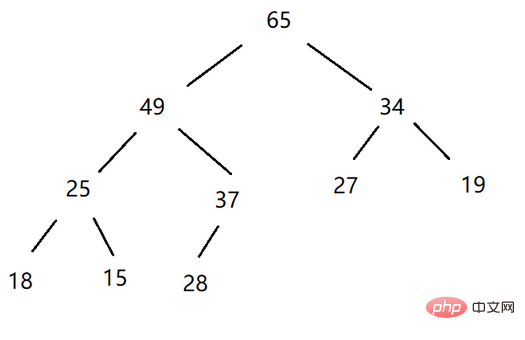
Small heap: A complete binary tree in which the root node is smaller than the two left and right child nodes is called a small heap (the parent node is smaller than its child nodes), or a small root heap, or a minimum heap.
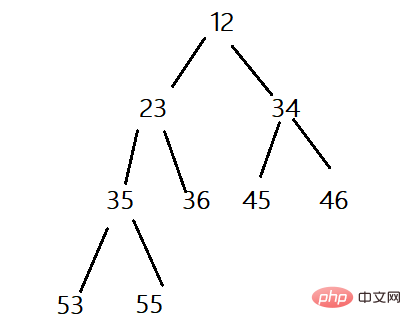
Downward adjustment of the heap
Now there is an array, which is logically a complete binary tree. We can use the downward adjustment algorithm starting from the root node to It adjusts to a small pile or a large pile. The downward adjustment algorithm has a premise: the left and right subtrees must be a heap before they can be adjusted.
Take a small heap as an example:
1. First, let the left and right child nodes compare and take the minimum value.
2. Compare the smaller child node with the parent node. If the child node 3. The cycle repeats. If the subscript of the child node is out of bounds, it means that it has reached the end and it is over. Code example: Given an array, this array can be logically regarded as a complete binary tree , but it is not yet a heap (the left and right subtrees are not both large or small). Now we use the algorithm to build it into a heap (large or small). how should I do it? Here we start adjusting from the first subtree of the last non-leaf node, and adjust it all the way to the tree of the root node, and then we can adjust it into a pile. Here we will use the downward adjustment we just wrote. The space complexity of building a heap is O(N), because the heap is a complete binary tree, and a full binary tree is also a complete binary tree. We use a full binary tree (in the worst case) to prove it. Now there is a heap, we need to insert data at the end of the heap, and then adjust it so that it still maintains the heap structure, this is an upward adjustment. Take a large heap as an example: Code example: To add an element to the heap, add it to the last position, and then adjust it upward. To delete elements from the heap, swap the top element of the heap with the last element, then decrease the size of the entire array by one, and finally adjust it downward to delete the top of the stack. element. Give you 6 data, find the top 3 largest data. How do we use the heap at this time? Problem-solving ideas: 1. If you want to find the top K largest elements, you need to build a small root heap. 2. If you want to find the first K smallest elements, you need to build a large root heap. 3. The Kth largest element. Build a small heap, and the top element of the heap is the Kth largest element. 4. The Kth smallest element. Build a big heap, and the top element of the heap is the Kth largest element. For example: Find the first n largest data 
//parent: 每棵树的根节点
//len: 每棵树的调整的结束位置
public void shiftDown(int parent,int len){
int child=parent*2+1; //因为堆是完全二叉树,没有左孩子就一定没有右孩子,所以最起码是有左孩子的,至少有1个孩子
while(child<len){
if(child+1<len && elem[child]<elem[child+1]){
child++;//两孩子结点比较取较小值
}
if(elem[child]<elem[parent]){
int tmp=elem[parent];
elem[parent]=elem[child];
elem[child]=tmp;
parent=child;
child=parent*2+1;
}else{
break;
}
}
}Creation of heap
public void creatHeap(int[] arr){
for(int i=0;i<arr.length;i++){
elem[i]=arr[i];
useSize++;
}
for(int parent=(useSize-1-1)/2;parent>=0;parent--){//数组下标从0开始
shiftDown(parent,useSize);
}
}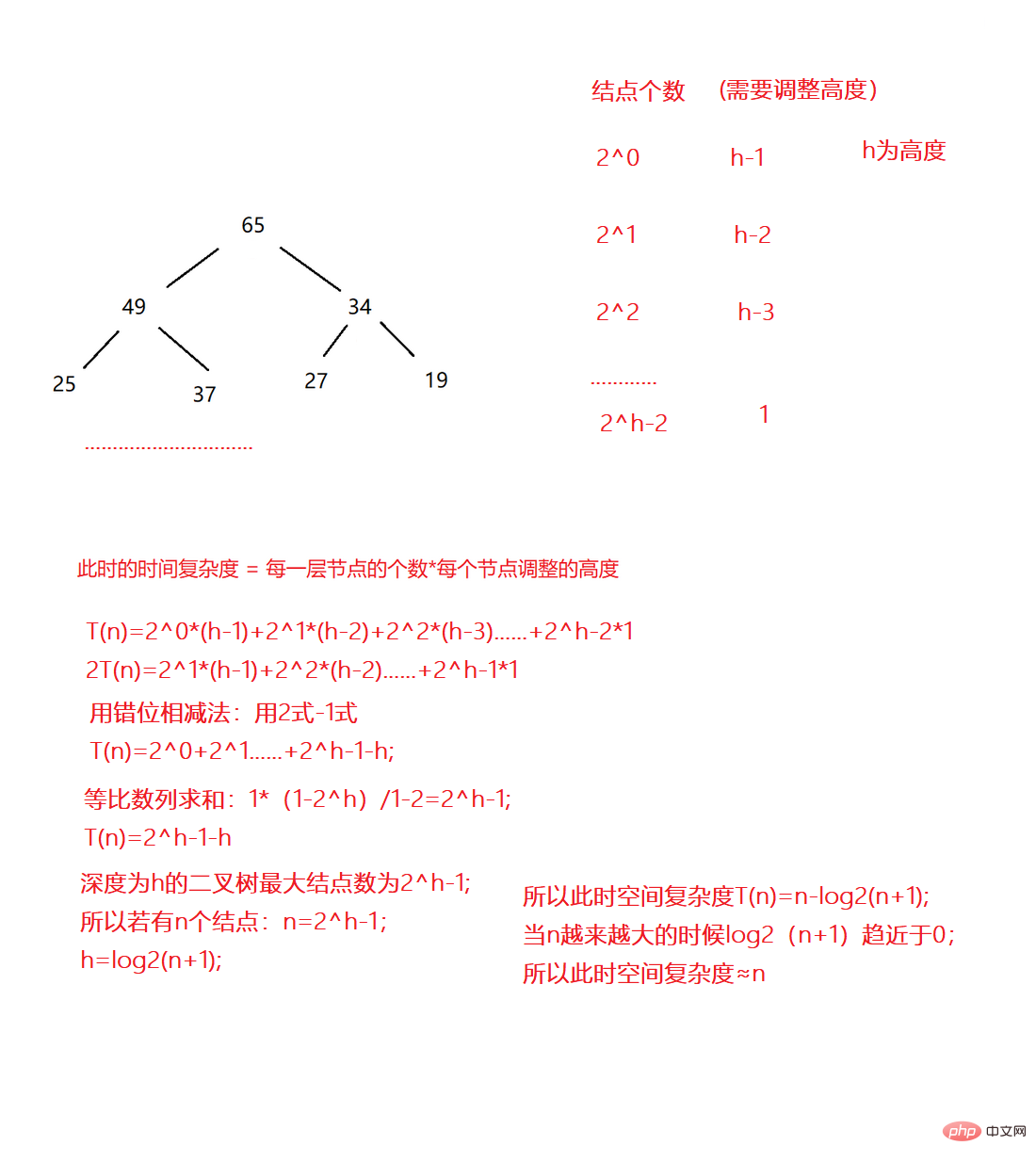
The heap must be adjusted upward
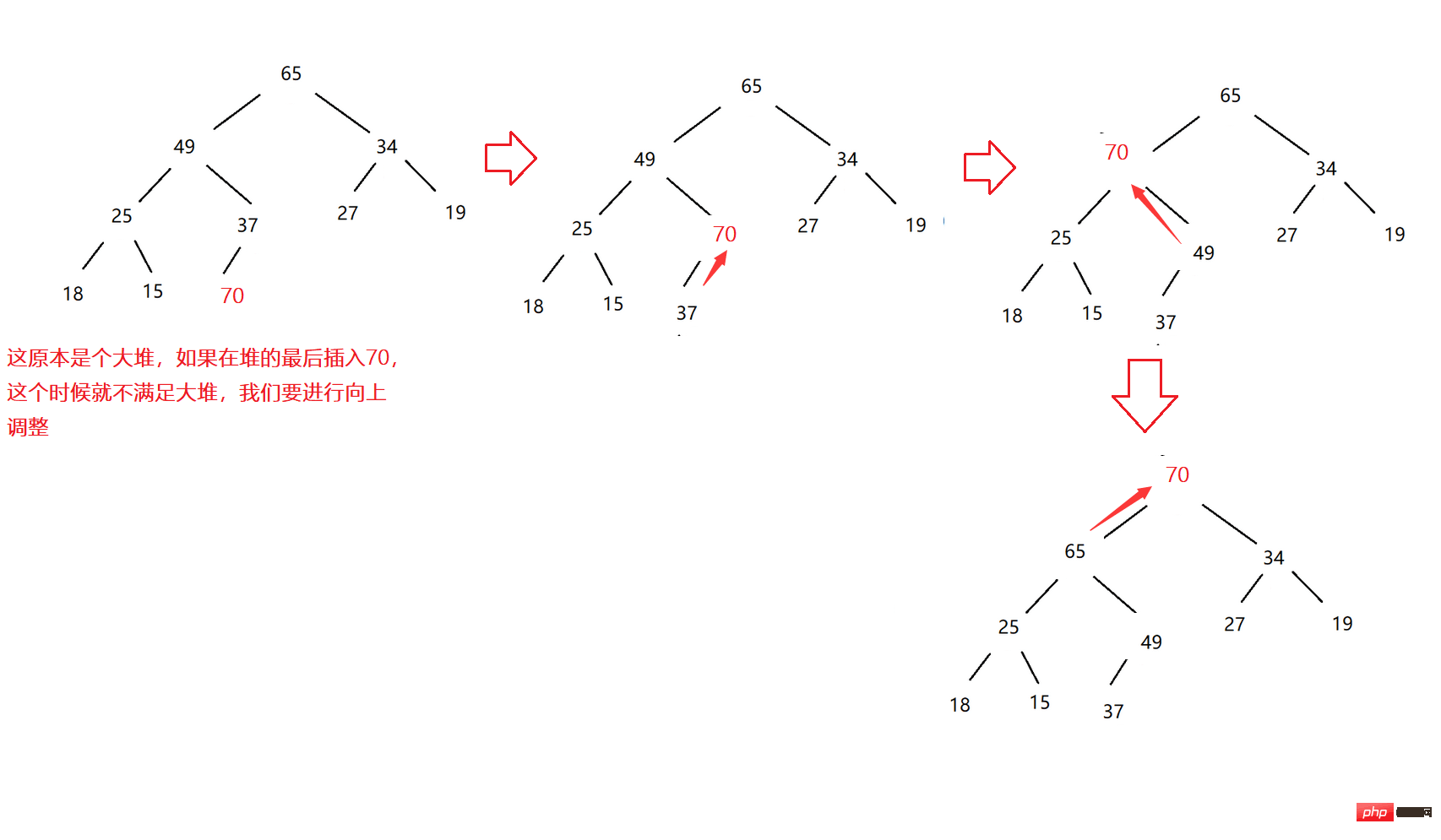
public void shiftup(int child){
int parent=(child-1)/2;
while(child>0){
if(elem[child]>elem[parent]){
int tmp=elem[parent];
elem[parent]=elem[child];
elem[child]=tmp;
child=parent;
parent=(child-1)/2;
}else{
break;
}
}
}Common operations on the heap
Enter queue
public boolean isFull(){
return elem.length==useSize;
}
public void offer(int val){
if(isFull()){
elem= Arrays.copyOf(elem,2*elem.length);//扩容
}
elem[useSize++]=val;
shiftup(useSize-1);
}Dequeue
public boolean isEmpty(){
return useSize==0;
}
public int poll(){
if(isEmpty()){
throw new RuntimeException("优先级队列为空");
}
int tmp=elem[0];
elem[0]=elem[useSize-1];
elem[useSize-1]=tmp;
useSize--;
shiftDown(0,useSize);
return tmp;
}Get the first element of the team
public int peek() {
if (isEmpty()) {
throw new RuntimeException("优先级队列为空");
}
return elem[0];
}TopK Question
Example
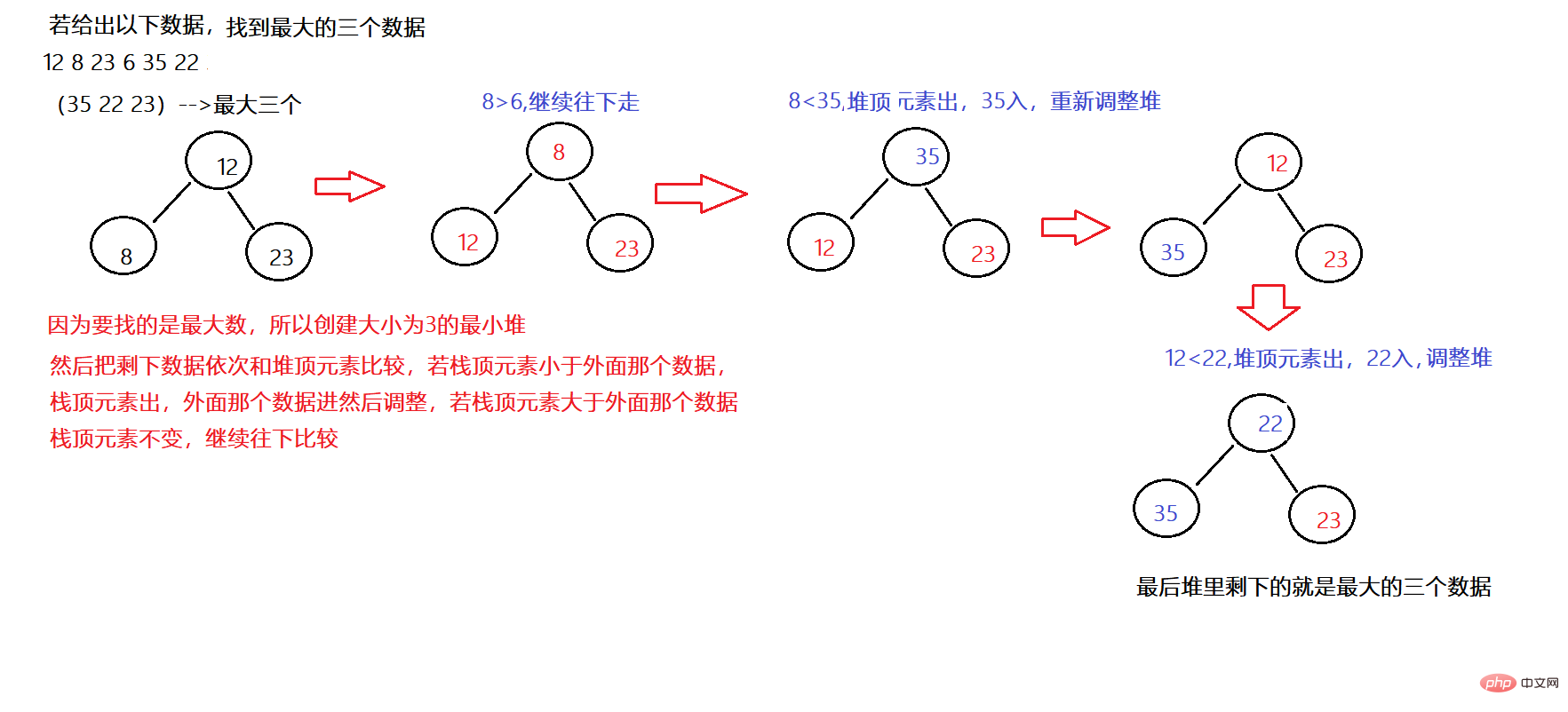
public static int[] topK(int[] array,int k){
//创建一个大小为K的小根堆
PriorityQueue<Integer> minHeap=new PriorityQueue<>(k, new Comparator<Integer>() {
@Override
public int compare(Integer o1, Integer o2) {
return o1-o2;
}
});
//遍历数组中元素,将前k个元素放入队列中
for(int i=0;i<array.length;i++){
if(minHeap.size()<k){
minHeap.offer(array[i]);
}else{
//从k+1个元素开始,分别和堆顶元素比较
int top=minHeap.peek();
if(array[i]>top){
//先弹出后存入
minHeap.poll();
minHeap.offer(array[i]);
}
}
}
//将堆中元素放入数组中
int[] tmp=new int[k];
for(int i=0;i< tmp.length;i++){
int top=minHeap.poll();
tmp[i]=top;
}
return tmp;
}
public static void main(String[] args) {
int[] array={12,8,23,6,35,22};
int[] tmp=topK(array,3);
System.out.println(Arrays.toString(tmp));
}

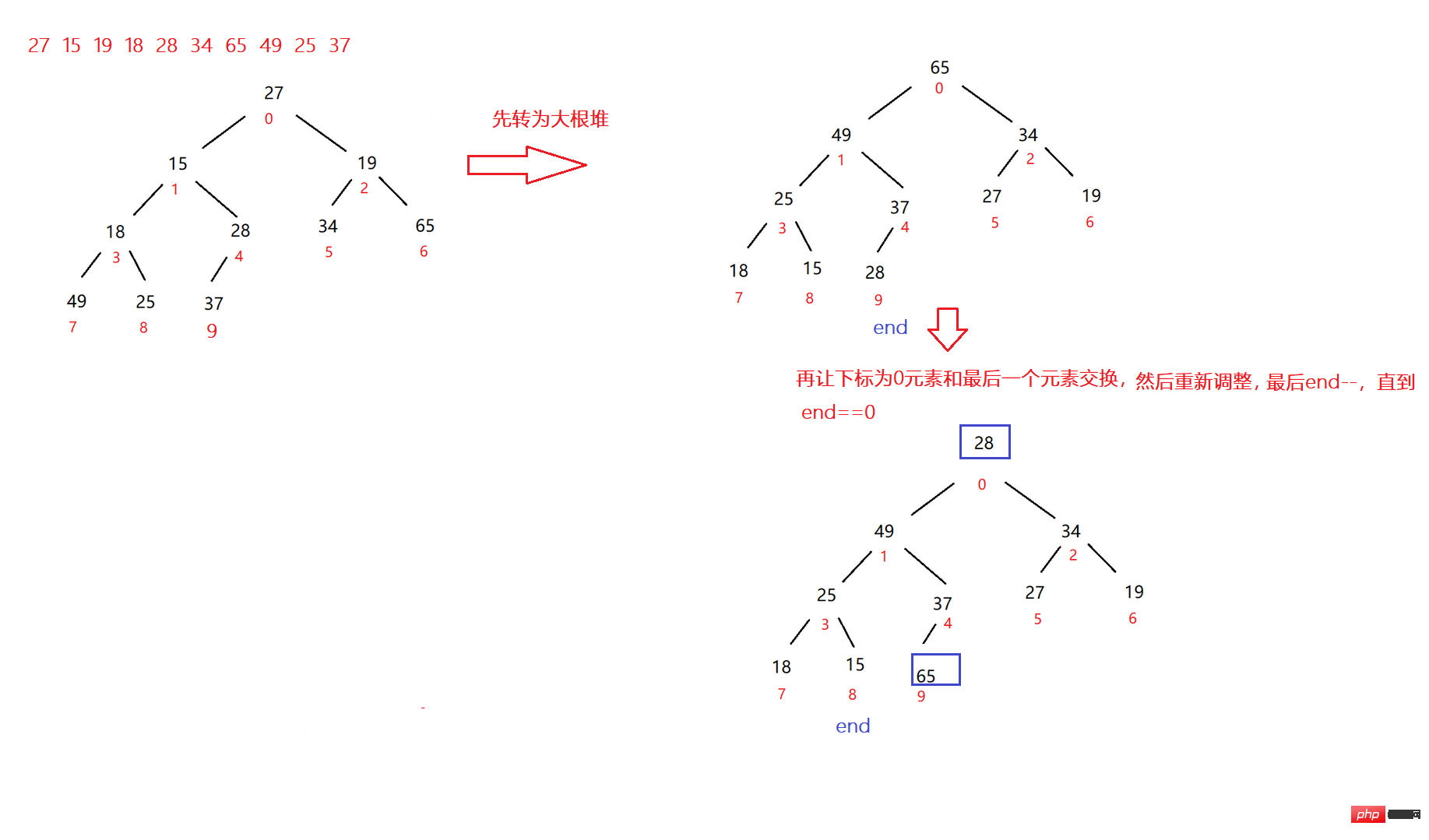
public void heapSort(){
int end=useSize-1;
while(end>0){
int tmp=elem[0];
elem[0]=elem[end];
elem[end]=tmp;
shiftDown(0,end);//假设这里向下调整为大根堆
end--;
}
}The above is the detailed content of How to create a heap of Java data structures. For more information, please follow other related articles on the PHP Chinese website!

Hot AI Tools

Undresser.AI Undress
AI-powered app for creating realistic nude photos

AI Clothes Remover
Online AI tool for removing clothes from photos.

Undress AI Tool
Undress images for free

Clothoff.io
AI clothes remover

Video Face Swap
Swap faces in any video effortlessly with our completely free AI face swap tool!

Hot Article

Hot Tools

Notepad++7.3.1
Easy-to-use and free code editor

SublimeText3 Chinese version
Chinese version, very easy to use

Zend Studio 13.0.1
Powerful PHP integrated development environment

Dreamweaver CS6
Visual web development tools

SublimeText3 Mac version
God-level code editing software (SublimeText3)

Hot Topics
 1666
1666
 14
14
 1425
1425
 52
52
 1327
1327
 25
25
 1273
1273
 29
29
 1253
1253
 24
24
 Break or return from Java 8 stream forEach?
Feb 07, 2025 pm 12:09 PM
Break or return from Java 8 stream forEach?
Feb 07, 2025 pm 12:09 PM
Java 8 introduces the Stream API, providing a powerful and expressive way to process data collections. However, a common question when using Stream is: How to break or return from a forEach operation? Traditional loops allow for early interruption or return, but Stream's forEach method does not directly support this method. This article will explain the reasons and explore alternative methods for implementing premature termination in Stream processing systems. Further reading: Java Stream API improvements Understand Stream forEach The forEach method is a terminal operation that performs one operation on each element in the Stream. Its design intention is
 PHP: A Key Language for Web Development
Apr 13, 2025 am 12:08 AM
PHP: A Key Language for Web Development
Apr 13, 2025 am 12:08 AM
PHP is a scripting language widely used on the server side, especially suitable for web development. 1.PHP can embed HTML, process HTTP requests and responses, and supports a variety of databases. 2.PHP is used to generate dynamic web content, process form data, access databases, etc., with strong community support and open source resources. 3. PHP is an interpreted language, and the execution process includes lexical analysis, grammatical analysis, compilation and execution. 4.PHP can be combined with MySQL for advanced applications such as user registration systems. 5. When debugging PHP, you can use functions such as error_reporting() and var_dump(). 6. Optimize PHP code to use caching mechanisms, optimize database queries and use built-in functions. 7
 PHP vs. Python: Understanding the Differences
Apr 11, 2025 am 12:15 AM
PHP vs. Python: Understanding the Differences
Apr 11, 2025 am 12:15 AM
PHP and Python each have their own advantages, and the choice should be based on project requirements. 1.PHP is suitable for web development, with simple syntax and high execution efficiency. 2. Python is suitable for data science and machine learning, with concise syntax and rich libraries.
 PHP vs. Other Languages: A Comparison
Apr 13, 2025 am 12:19 AM
PHP vs. Other Languages: A Comparison
Apr 13, 2025 am 12:19 AM
PHP is suitable for web development, especially in rapid development and processing dynamic content, but is not good at data science and enterprise-level applications. Compared with Python, PHP has more advantages in web development, but is not as good as Python in the field of data science; compared with Java, PHP performs worse in enterprise-level applications, but is more flexible in web development; compared with JavaScript, PHP is more concise in back-end development, but is not as good as JavaScript in front-end development.
 PHP vs. Python: Core Features and Functionality
Apr 13, 2025 am 12:16 AM
PHP vs. Python: Core Features and Functionality
Apr 13, 2025 am 12:16 AM
PHP and Python each have their own advantages and are suitable for different scenarios. 1.PHP is suitable for web development and provides built-in web servers and rich function libraries. 2. Python is suitable for data science and machine learning, with concise syntax and a powerful standard library. When choosing, it should be decided based on project requirements.
 PHP's Impact: Web Development and Beyond
Apr 18, 2025 am 12:10 AM
PHP's Impact: Web Development and Beyond
Apr 18, 2025 am 12:10 AM
PHPhassignificantlyimpactedwebdevelopmentandextendsbeyondit.1)ItpowersmajorplatformslikeWordPressandexcelsindatabaseinteractions.2)PHP'sadaptabilityallowsittoscaleforlargeapplicationsusingframeworkslikeLaravel.3)Beyondweb,PHPisusedincommand-linescrip
 PHP: The Foundation of Many Websites
Apr 13, 2025 am 12:07 AM
PHP: The Foundation of Many Websites
Apr 13, 2025 am 12:07 AM
The reasons why PHP is the preferred technology stack for many websites include its ease of use, strong community support, and widespread use. 1) Easy to learn and use, suitable for beginners. 2) Have a huge developer community and rich resources. 3) Widely used in WordPress, Drupal and other platforms. 4) Integrate tightly with web servers to simplify development deployment.
 PHP vs. Python: Use Cases and Applications
Apr 17, 2025 am 12:23 AM
PHP vs. Python: Use Cases and Applications
Apr 17, 2025 am 12:23 AM
PHP is suitable for web development and content management systems, and Python is suitable for data science, machine learning and automation scripts. 1.PHP performs well in building fast and scalable websites and applications and is commonly used in CMS such as WordPress. 2. Python has performed outstandingly in the fields of data science and machine learning, with rich libraries such as NumPy and TensorFlow.




